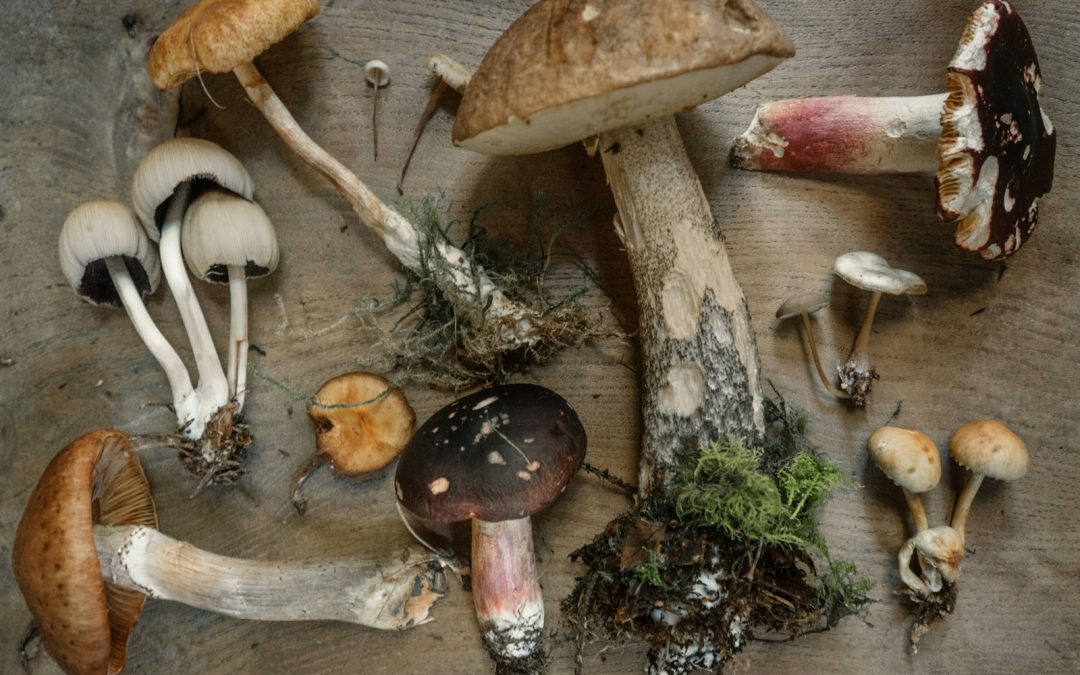Gardening enthusiasts are always on the lookout for methods to enhance their indoor gardens. One powerful, often overlooked solution is the use of mycorrhizal fungi. These beneficial fungi form a symbiotic relationship with plant roots, significantly boosting plant health, growth, and productivity. This article delves into the essential tips and benefits of incorporating mycorrhizal fungi into your indoor garden.
Contents
Understanding Mycorrhizal Fungi
What are Mycorrhizal Fungi?
Mycorrhizal fungi are a group of fungi that form symbiotic relationships with the roots of most plant species. This mutualistic relationship benefits both the fungi and the plants. The fungi assist the plant in absorbing water and essential nutrients like phosphorus and nitrogen from the soil, while the plant provides the fungi with carbohydrates formed through photosynthesis.
Types of Mycorrhizal Fungi
There are two primary types of mycorrhizal fungi:
- Ectomycorrhizal Fungi (EMF): These fungi form an external network around the root surface, aiding nutrient exchange. They are typically associated with woody plants like trees.
- Arbuscular Mycorrhizal Fungi (AMF): These penetrate the root cells and are more commonly associated with herbaceous plants, including many indoor garden varieties.
Benefits of Mycorrhizal Fungi for Indoor Plants
Mycorrhizal fungi offer numerous benefits for indoor plants:
- Enhanced Nutrient Uptake: Mycorrhizal fungi expand the root surface area, allowing plants to absorb nutrients more efficiently.
- Improved Soil Structure: The fungi help in forming soil aggregates, improving soil aeration and water retention.
- Increased Resistance to Stress: Plants with mycorrhizal associations are more resistant to drought, diseases, and pests.
- Accelerated Growth: Enhanced nutrient uptake and stress resistance lead to faster and healthier plant growth.
How to Incorporate Mycorrhizal Fungi into Your Indoor Garden
Choosing the Right Mycorrhizal Product
When selecting a mycorrhizal product, consider the following factors:
- Compatibility: Ensure the product contains the appropriate type of mycorrhizal fungi for your plants. For most indoor plants, arbuscular mycorrhizal fungi are the best choice.
- Quality: Look for products with a high concentration of viable spores. Check for certifications and reviews from other gardeners.
- Application Method: Mycorrhizal fungi can be applied as a powder, granules, or in a liquid form. Choose the method that best suits your gardening routine.
Application Techniques
Proper application of mycorrhizal fungi is crucial for achieving the best results. Here are some effective techniques:
- Direct Application to Roots: When transplanting seedlings, apply the fungi directly to the root system. This ensures immediate contact and colonization.
- Soil Incorporation: Mix the fungi into the potting soil before planting. This method works well for new gardens or repotting.
- Top Dressing: Sprinkle the fungi on the soil surface around established plants and water thoroughly. This method is useful for maintaining existing plants.
Dosage and Frequency
Follow the manufacturer’s instructions for dosage and frequency of application. Over-application can be wasteful and under-application might not yield the desired benefits. Generally, applying the fungi during planting or transplanting, and then periodically as a top dressing, is effective.
Best Practices for Using Mycorrhizal Fungi
Ensure Optimal Conditions
For mycorrhizal fungi to thrive and benefit your plants, maintain optimal conditions:
- Soil Health: Ensure your soil is rich in organic matter and well-drained.
- Avoid Over-fertilization: Excessive use of chemical fertilizers can harm mycorrhizal fungi. Opt for organic fertilizers that support fungal health.
- Proper Watering: Maintain consistent soil moisture without waterlogging. Overly wet conditions can hinder fungal activity.
Companion Planting
Companion planting can enhance the effectiveness of mycorrhizal fungi. Some plants, like legumes, can boost fungal activity and benefit neighboring plants through shared fungal networks.
Monitoring and Adjusting
Regularly monitor your plants for signs of improved health, growth, and resistance to stress. Adjust your mycorrhizal fungi application based on observed results and changing plant needs.
Common Questions About Mycorrhizal Fungi
Are Mycorrhizal Fungi Safe for All Plants?
Most plants benefit from mycorrhizal fungi, but there are exceptions. Plants in the Brassicaceae family, such as cabbage and broccoli, do not form mycorrhizal associations. Always check plant compatibility before applying the fungi.
Can Mycorrhizal Fungi Replace Fertilizers?
While mycorrhizal fungi significantly enhance nutrient uptake, they should not completely replace fertilizers. Instead, use them in conjunction with organic fertilizers to promote overall soil and plant health.
How Long Do Mycorrhizal Fungi Last?
Mycorrhizal fungi can persist in the soil for years once established, especially in healthy soil conditions. However, reapplication may be necessary when repotting or adding new plants.
Real-Life Success Stories
Indoor Garden Transformation with Mycorrhizal Fungi
Many indoor gardeners have reported remarkable improvements after incorporating mycorrhizal fungi into their routines. Here are a few success stories:
- Jane’s Urban Jungle: Jane, an urban gardener, struggled with slow-growing plants in her apartment. After introducing mycorrhizal fungi, she noticed a significant increase in growth rate and overall plant health within a few months.
- Tom’s Indoor Herb Garden: Tom applied mycorrhizal fungi to his herb garden, resulting in more vigorous and flavorful herbs. The plants also showed increased resistance to pests and diseases.
Scientific Studies Supporting Mycorrhizal Benefits
Numerous scientific studies have validated the benefits of mycorrhizal fungi. For instance, a study published in the journal Frontiers in Plant Science found that mycorrhizal associations significantly improved nutrient uptake and plant growth in controlled environments.
Conclusion
Incorporating mycorrhizal fungi into your indoor garden can transform your plants’ health, growth, and productivity. By understanding the types, benefits, and application methods of these beneficial fungi, you can create a thriving indoor garden ecosystem. Remember to choose the right product, apply it correctly, and maintain optimal growing conditions for the best results.


